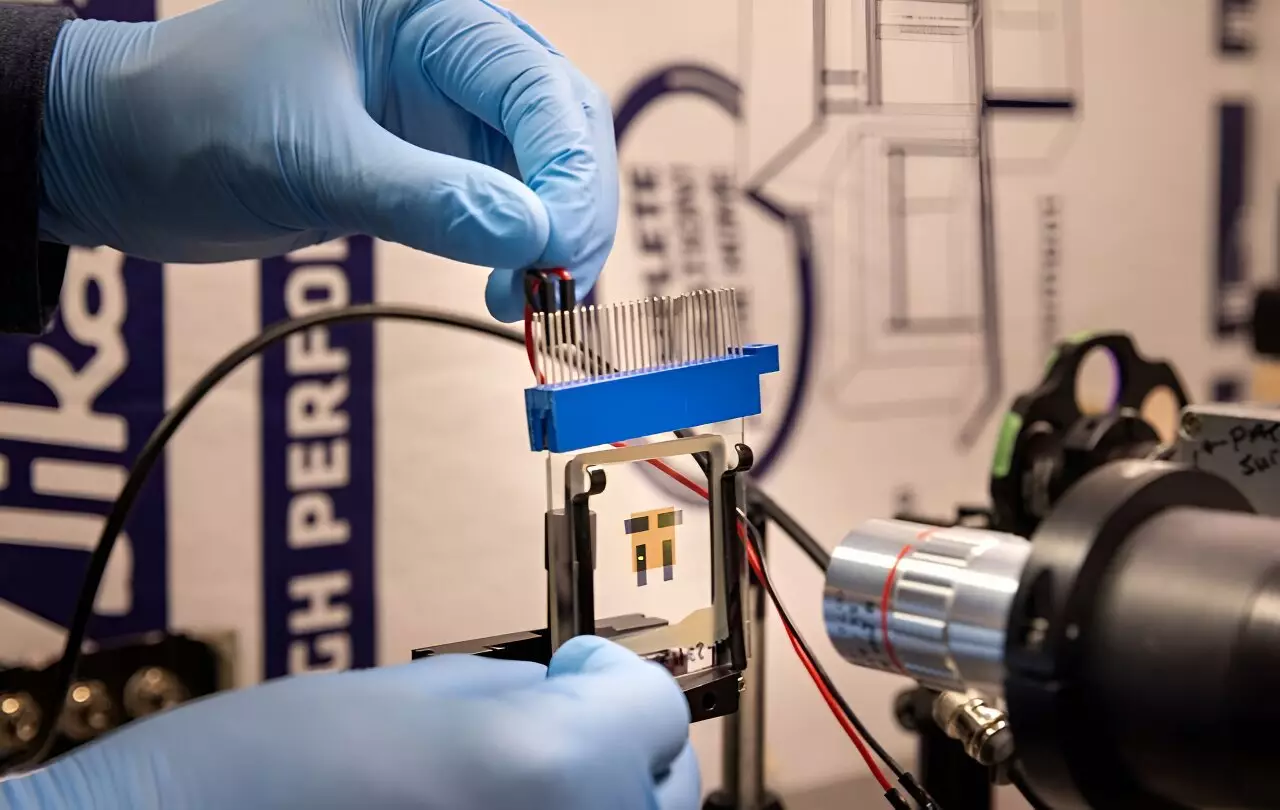For decades, night vision technology has relied heavily on bulky apparatus like night vision goggles, which utilize image intensifiers to amplify low-light conditions. Traditional systems operate by capturing near-infrared light and converting it into visible light through a complex process involving high voltages and a vacuum chamber. These cumbersome systems not only hinder mobility but also incur substantial costs and may limit prolonged use due to their weight and power consumption. As various sectors, including military, surveillance, and recreational activities, seek more efficient night-time solutions, the need for innovations that reduce size and enhance functionality becomes increasingly pressing.
Researchers from the University of Michigan have made significant strides in addressing these challenges through a newly conceptualized OLED (organic light emitting diode) technology. Described in their paper published in Nature Photonics, this innovative OLED device promises to replace traditional night vision sunglasses with a lightweight solution while effectively amplifying light without the bulk and high energy demands. By producing over 100-fold amplification of near-infrared light into visible light, the new apparatus opens avenues toward applications previously thought impractical, fundamentally transforming how users interact with their nocturnal environments.
What sets this OLED technology apart is its ingenious design that eliminates the need for high voltage and vacuums. Instead, it incorporates a photon-absorbing layer combined with a five-layer stack of OLED materials. This configuration not only converts infrared light into electrons but also performs the crucial step of creating visible light photons. Theoretical models suggest that for every electron that traverses this OLED stack, up to five photons could be generated. This creates an effective feedback loop, where emitted photons are partially reabsorbed, producing more electrons and exponentially increasing light output.
Chris Giebink, a prominent professor within the research team, articulated that the amplification even occurs within a thin film stack, measuring less than a micron thick—significantly thinner than a human hair. This compact design radically contrasts with the bulk of existing technologies, offering a scope for widespread adoption and enhanced user comfort.
Another remarkable aspect of this OLED innovation is its ability to exhibit “hysteresis” or memory behavior. Unlike standard systems that immediately cease output when light exposure ends, this device retains information based on previous light signals. Giebink notes that this characteristic may offer unique opportunities for advancement in computer vision fields, presenting possibilities for processing images in a more organic manner, similar to the human brain’s function. The potential to interpret visual data without relying on separate processing units emphasizes the device’s future applications.
Although there are challenges associated with this memory effect for night vision applications, the capability of retaining prior inputs could ultimately lead to smarter night vision systems that evolve and learn. This could have vast implications, from improved environmental navigation to enhanced target recognition in military applications.
One of the most promising aspects of this OLED development is its fabrication process. The device can be constructed using standard materials and methods within the current OLED manufacturing landscape. Such adaptability promotes both cost-effectiveness and scalability. As the technology matures, its entry into commercial markets could facilitate the widespread application in various sectors, ensuring that enhanced night vision becomes accessible to a broader audience, from law enforcement agencies to ordinary consumers interested in outdoor activities.
As researchers unveil groundbreaking advancements in OLED technology, the evolution of night vision systems promises a remarkable shift away from prior limitations. By harnessing the benefits of an advanced, lightweight OLED solution capable of high amplification and intelligent data processing, future night vision could become dramatically more practical and user-friendly. The path towards reducing the cumbersome constraints of outdated systems is now clearer, supported by solid research that boasts transformational potential. The road ahead is exciting and filled with promise, not only for enhanced visual capabilities in darkness but also for the realms of computer vision and artificial intelligence, paving the way toward smarter, more adaptive technologies.


Leave a Reply